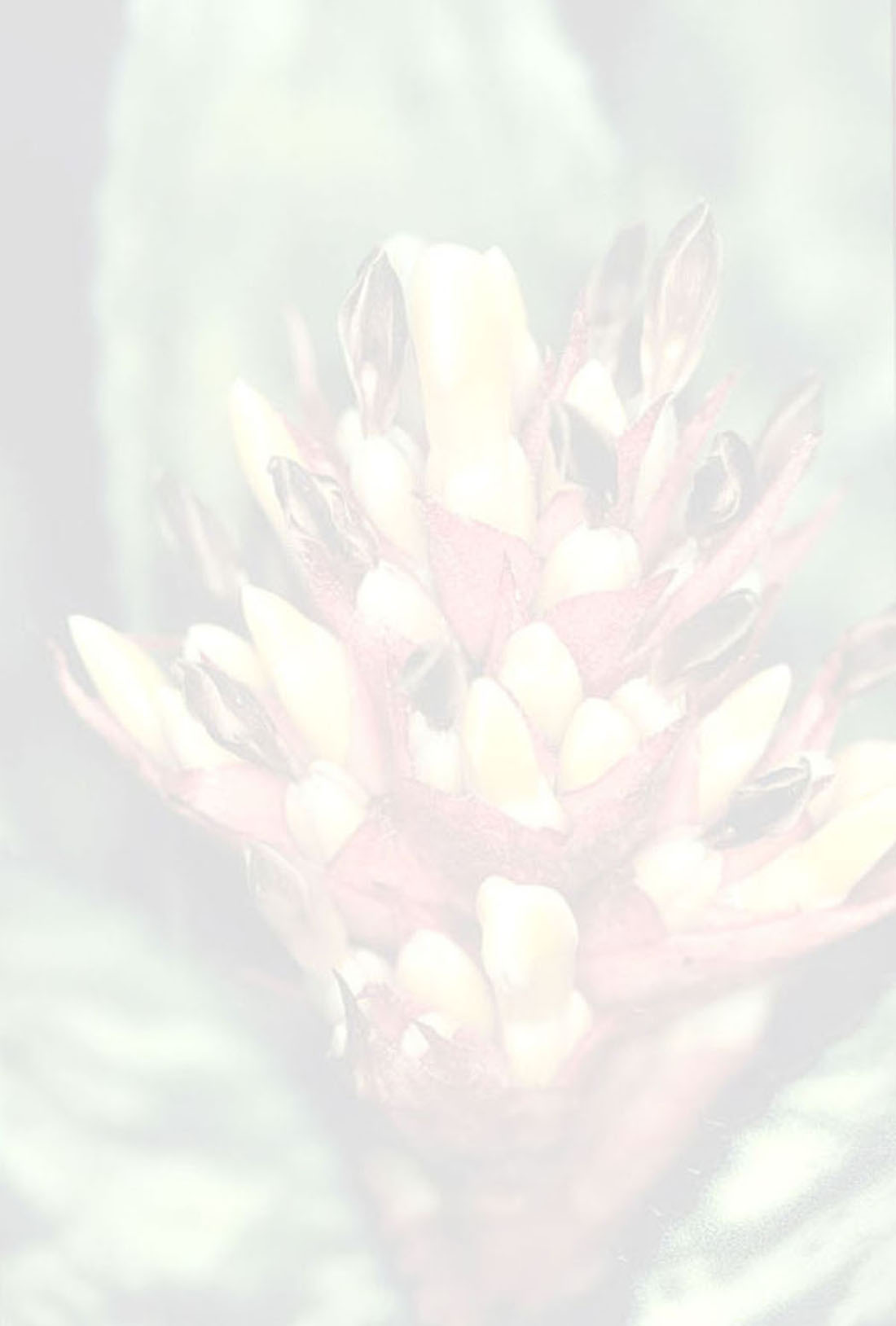


plant terrestrial or sometimes epiphytic, flowering 70–100 cm tall, propagating by short basal shoots. leaves 15 to 20, coriaceous, forming a broad crateriform rosette; sheath oblong-ovate to elliptic, ca 20 x 12 cm, densely pale lepidote, abaxially dark castaneous toward the base, adixially dark castaneous to blackish-purple mainly toward the apex; blade linear, not narrowed at base, 43–70 x 5–8 (–11) cm, inconspicuously and subdensely white-lepidote mainly abaxially, green to greenish yellow, apex acute to rounded and distinctly apiculate, stramineous, coarsely corrugate, ending in a stout dark rigid spine 1–2 cm long, margins densely spinose, spines mostly antrorse, dark brown, 1–1.5 x 1 mm, 2–5 mm apart. inflorescence: peduncle erect, 35–60 cm long, 0.7–1 cm in diameter, densely white lanate, finely sulcate, greenish; peduncle bracts narrowly sublinear-lanceolate, apex acuminate, 4.5–9 x 1–1.8 cm, stramineous, inconspicuously and sparse ly white-lepidote, nerved, the basal ones densely spinulose near the apex, the upper ones entire, erect, exceeding the internodes, almost totally covering the peduncle; fertile part narrowly paniculate, inconspicuously twice-branched at base to once-branched else where, (20-)30–46 cm long, 14–25 cm in diameter, shorter than to exceeding the leaves; primary bracts resembling the upper peduncle bracts but gradually smaller, distinctly shorter than the branches but exceeding the stipes, spreading, stramineous, entire or sometimes inconspicuously and sparsely spinulose; branches (5-)9–15, laxly arranged, cylindrical, suberect, ascending toward the apex; with 25 (on shorter branches) to 50 (on longer branches) flowers, 2–2.5 cm in diameter, densely flowered, the basal ones 10–16 cm long, the upper ones 6–7 cm long, stipes 0.5–1 cm long, naked, rachis straight, sparsely and inconspicuously white-sublanate to glabrescent, pale yellowish green, 2.5–4 mm in diameter, subangulose, the terminal branch not distinct from the lateral ones; floral bracts castaneous, stramineous, 7–13 x 2.5–3 mm, with a broadly ovate to subtriangular base; 3–5 mm tong, ending in a 4–8 mm long acicular apex entire, exceeding the ovary (the basal ones on the terminal branch equaling the sepals to slightly exceeding the flowers), finely nerved, inconspicuously white-sublanate at base. flowers ca 15 mm long (when petals extended), sessile, densely, polystichously, and equally arranged, spreading, fragrance not detected; sepals strongly asymmetric, x 3 mm including the 2.5–3.5 mm long apical suberect acicular mucro, connate at base for ca 0.5 mm, glabrous, green at base, reddish to purplish near the apex; petals lanceolate, acuminate, ca 9 x 2.5 mm, white except for purple apex tip, erect at base and spreading-recurved toward the apex at anthesis, free, naked but bearing 2 conspicuous longitudinal callosities about equaling the filaments. stamens: filament ca 4.5 mm long, the antepetalous ones adnate to the petals for 1–2 mm, the antesepalous ones free; anther ca 2 mm long, base obtuse, apex shortly apiculate, fixed near the middle. pistil: stigma condupli cate-spiral, narrowly flusiform, lobes inconspicuously crenulate, ca 1.5 mm long, green; ovary ovate, terete, ca 5 x 4 mm, glabrous, pale green; placentation apical; ovules obtuse; epigynous tube inconspicuous, ca 1 mm long. fruits coral red to blackish when older, broadly ovate to subglobose, 6–7 mm in diameter.Edited from : Siqueira & Leme 2006. Taxonomia das bromélias dos fragmentos de mata atlântica de Pernambuco e Alagoas in Siqueira F., J.A. & Leme, E.M.C., Fragmentos de Mata Atlântica do Nordeste, Biodiversidade, Conservação e suas Bromélias. Andrea Jakobsson Estúdio, Rio de Janeiro.